|
with Michelle Cameron Getting to Know You: Story Magic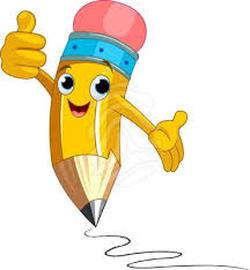 What a great start to the session! I really enjoyed meeting your young writers and learning about their summer vacations, favorite books, and the fact that so many of them have great story ideas. To get us started, I asked a number of questions. They wrote the answers down (sometimes with help – thanks so much, Kim!) and then we shared them. Here was what I asked: 1. What color is your toothbrush? 2. What is your favorite food? 3. How many pairs of shoes do you have? 4. What is your favorite animal – real or imagined? 5. What name do you wish your parents had given you? 6. If you could go anywhere – on earth, in outer space, an imaginary place – where would you go? 7. When you knew you were starting a writing class today, how did you feel? 8. What’s your favorite toy? 9. What’s your favorite thing to do? 10. What’s the best way to capture a dragon? Have them show you their answers and you’ll see why I’m so excited to work with them. Their imaginations are on over-drive – exactly the way they should be, at their age. We took my answers (which I was jotting down on the whiteboard as we talked) and made a story out of the resulting words. I did my best to pull them away from being too literal (just because my toothbrush is red and white, it doesn’t mean we need to include a toothbrush in the story!) and encouraged them to think nutty. 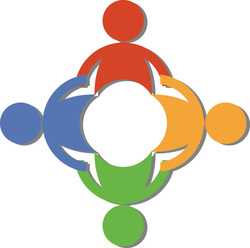 Some of them wrote complete stories, while others just got started on theirs. Both results are fine. Children (and adults) write at different speeds and the worst thing to do to a slow writer is to push them to hurry up. I did ask those who just started stories to work on them over the week. Those children that did finish their stories have been challenged to write a brand new one, using the same words. Parents, please help them both rethink their word lists as well as scribe for those who need it. Our philosophy at The Writers Circle is that we don’t want the mechanics of writing to slow down the children’s imagination and enthusiasm. Of course we shared what they wrote and I let them know that they need to start off from the positive when talking about anyone’s work. I already see that they are good listeners. Finally, each child has been given two index cards to collect two “red” words this week. I was pleasantly astonished that they’re already considering emotions as well as concrete words – when I asked for examples of red words, they volunteered angry and mad, as well as apple and blood. If they’d like, they can list all the red words they like in their notebooks and just give me their two favorites next week.
I hope they enjoyed the class as much as I did! See you next week! with Sally Zeiner Finding the Center of Gravity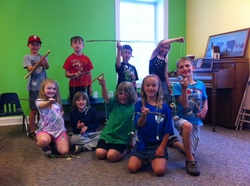 For our final class we reviewed what we learned about energy by talking out some experiments. In the back of the lab book you can find the questions that helped us to understand that energy is never destroyed. In our experiments, energy changed forms many times. What kinds of energy can you put to work in experiments at home? 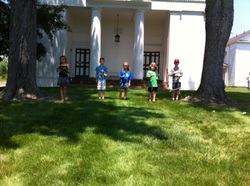 This group of students really enjoyed the hands-on and experiential nature of the curriculum. It was a wonderful class to teach! For our last experiment, we read about Archimedes from Archimedes and the Door of Science. Then, using spoons, sticks, shells, and strings, we explored finding the center of gravity. I hope you all have a wonderful summer! We could not have been more proud of the students that participated in our first Engineering Fair! They each did a terrific job with their displays, their presentations and they WOWED us all with their projects. As everyone could see, each put in tremendous effort. I do hope they left Mosaic feeling proud of their accomplishments. Here are images from the day: Young Inventors at Workwith Leigh Ann Yoder Engineering - Math & Science in Societywith Ed Insel
with Kim Rodgers Quite the Character!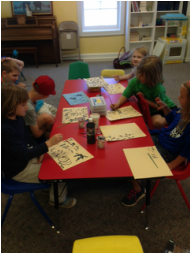 We spent our last class time together learning about the lines used to create Chinese characters called the Seven Mysteries. Chinese calligraphy uses these lines to create the characters representing words. We practiced each stroke with a paintbrush and then combined them to create the characters for tree, forest, and woman. We talked about how long it must have taken to write out a book by hand, painstakingly creating each character. This led into the discussion of printing. The Ancient Chinese were the first ancient culture to create a method of printing. They carved the characters backwards onto wooden blocks, so when ink was added the character was printed on the page correctly. The students drew an image on paper, cut it out, and traced it onto their block backwards. There was a layer of foam glued to the top of the wooden block. I cut around their image with an exacto knife. They took a screwdriver and scraped away any foam that wasn’t a part of their image. When they were done they used a stamp pad to see their final product. with Sally Zeiner The Epic Poem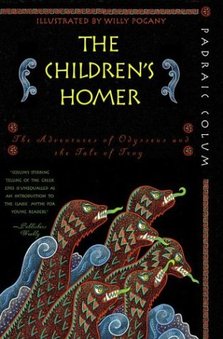 For our final writing class we learned about the form of the epic poem, such as Homer's Odyssey. To begin, I read aloud the first chapter of The Children's Homer by Padraic Colum in which Odysseus pretends to be mad to avoid being forced by Agamemnon to join in the Trojan War. An epic tale begins with an exile, like Odysseus's, followed by a journey, and the return home. In class we developed our main character, their companions, monsters, and the reason for the exile. Then the students found quiet places outside to begin writing. One at a time I met with them to hear about their ideas and help them to develop their stories. They were off and running with great ideas! I hope they will continue to work on these epic ideas over the summer. with Sally Zeiner Phinal Physics Phun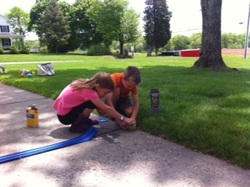 Putting vinegar and baking soda on the track. Putting vinegar and baking soda on the track. Last week we completed our final experiments in our lab book. We made machines using all of the different kinds of energy we have learned about this semester. Experimenting with a variety of materials, we built machines that used kinetic energy or stored energy to release chemical energy by combining vinegar and baking soda. The students wrote about their machines in their lab books. If they did not finish recording their observations and ideas, please have them finish this week. 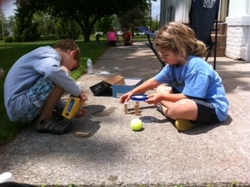 In our last class we will be learning about Archimedes, and the center of gravity. Please have students bring 2-3 smooth sticks 12-18 inches long, as well as objects they may want to attach to a mobile. Ready, Set...Debate!Students performed well in their second (and final) team debate, not only in strongly defending their positions on the topic, but in raising insightful questions about the issues and complexities surrounding gun control and violence in society.
The team arguing for the Affirmative position "Civilian possession of handguns should be banned" were the winners of the debate. Congratulations to ALL students for your hard work, preparation, and delivery of solid lines of argument on both sides of the issue. with Ed Insel Rocket Men and Women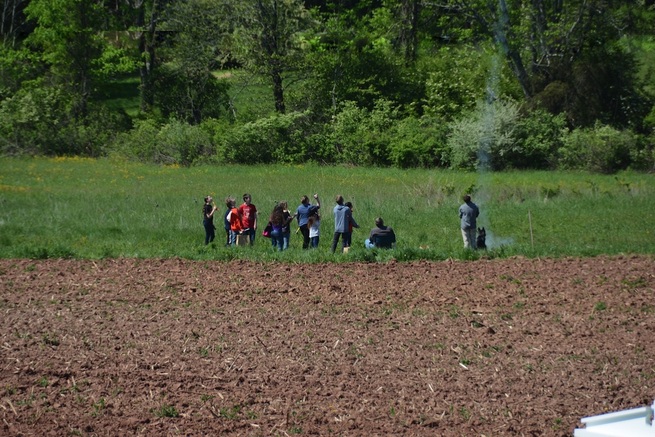 Wow, the kids did an awesome job with their rockets! This is the first time I’ve seen ten students successfully fly, recover, and then re-fly their rockets. The first flight used low-impulse engines and made it as high as 1,000 feet. The second launch used higher impulse engines and peaked at around 1,600 feet. We only had time to launch one rocket a third time, and we used an even higher impulse engine – best guess is about 2,500 feet. It went so high that the winds drifted it out of sight and it was lost. So sorry, but it advanced engineering understanding so “the pencil” lived a worthy life! Thank you to our two safety officers, our timers, our chasers, and our videographer. Embedded in the fun were some important engineering lessons the students should have taken away. The first: best results are achieved when we pay attention to the fabrication details. Second: every project needs people to take on varying roles and do them well. Third: planning the sequence of events ahead of time makes the whole project flow smoothly. And fourth: there is always something that can be done better next time! The lessons I learned include in-class training on roles/responsibilities on launch day, adding a few stopwatches to the toolkit, bringing a small table students can work at, having the students insert the igniters into their own engines, handing out extra wadding during final assembly, and finding smaller weights to put in the altitude-checking streamers. Thank you to those parents who hung around to watch. I think the students put on a show well worth seeing! I will see if I can edit down the video so others can see it during the Engineering Fair on June 2. Homework for Next Session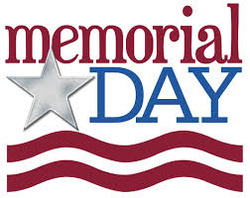 Remember, we do not have class next Monday, so students have two weeks to finish their engineering project. Several students have picked good engineering projects, but a few still haven’t told me what they are working on – please check your project choice with me via email. Later this week I will send everyone a final checklist of deliverables for the Fair and the exact times we’ll be displaying our work. Have a wonderful Memorial Day, and please be sure to take a moment to remember our military men and women who died protecting freedom and democracy around the world. with Leigh Ann Yoder Up, up, and away!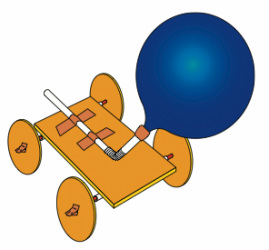 I was delighted to see the effort put into the students' cars at home. Everyone came into class excited and thrilled with their final designs. After a few minutes of tweaking we literally ran downstairs for racing. The first source of power was balloons. The students had to decide how to attach their balloons in order to maximize the thrust. One car flew across the room exceeding 20 feet! Another had the second best distance with 11 and 1/2 feet. Next, 4 feet 2 inches, and finally, 2 feet 8 inches. The remaining students were not able to make their cars move. (More about that in a bit.) It's the rubber band, man!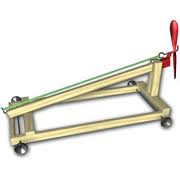 The second source of power was rubber bands. I explained to the students how to attach the rubber band and wind their axles to provide the necessary tension. Very few of the students were able to make their cars move and when they did the distances were small. Although there was disappointment in the classroom, I was actually pleased with the results. It gave us an opportunity to discuss the semester's underlying theme. Only from failure can we succeed! They are each becoming true engineers. We talked about what went wrong and how each car could be improved. We discussed things like materials, placement of elements, axles, rubber band choices, traction, etc. I was able to remind the students that no one ever gets it right the first time. The first time is just a beginning. I was extremely proud to hear the students bring up some of the stories we have read in class, and inventors they have learned about through their home readings. After talking they were no longer disappointed, but excited to go home and try again. I could not be more proud of the class. We have had so much fun this semester, but this was the absolute one thing I wanted to teach them. I do not want one of them to ever fear failure, but rather look at it as an opportunity. Please continue to enforce this at home. They are each on their way to success. Final PresentationsWe used a bit of class time to go over our final presentations. Again, the excitement from the students is thrilling. Most of them cannot wait to share their projects, and I cannot wait to see them. Please carefully review the homework assignments with your students. There are two weeks worth of homework assignments, so scheduling is important. Remember - there is no class next week in observance of Memorial Day. Monday, June 2, is our last class and our Engineering Fair. ALL PARENTS AND GUESTS are invited and encouraged to attend at 11AM (note time change). All Young Inventors are required to arrive at 10AM for set-up and practice. Please make certain to have the following items on June 2nd: 1. Display Board 2. Presentation Speech 3. Your finished project 4. Hands-on materials if applicable 5. Board Games Homework1. Finish the third panel. Remember this is a documentation of your project. Be certain to include a two paragraph summary of what you learned. If you have questions, please email me this week.
2. Prepare your hands-on activity (if doing one). 3. Use the outline I provided in class to write your speech. 4. Practice your speech at least four times! Preparation is the key to success. 5. Send me the field of engineering you studied this semester and two-three sentences introducing your project. I will use these to introduce each student. Please send this no later than Thursday, May 29. Stories of Inventions (Optional): Finish the book! Board Games (Optional): Continue to improve your game. with Leigh Ann Yoder Model Cars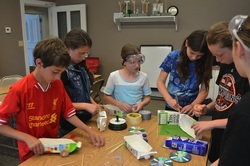 We opened class with a demonstration of a roll-back toy made from a coffee can, large bolt with several nuts, a twist tie, two nails and a rubber band. The mechanics of the toy were hidden and the students had to guess what was going on inside. After thinking for a few moments, the students were able to make a fairly accurate hypothesis. Well done! This simple demonstration gave us an opportunity to talk about a few simple physics concepts. I briefly introduced the terms equilibrium, potential energy, and kinetic energy. The class was anxious this week to get started, but first we read a little story about the most popular four-wheeled vehicle. The story was about a machine you have used many times. It has four wheels and can carry hundreds of pounds, but it doesn't have an engine. Can you guess what it is? I will give you a hint: It was invented by Mr. Goldman who became one of the richest people in the United States. Ask your students about this well known invention, its initial reception by the general public and its eventual impact on commerce. We also discussed the observation that some of the most successful inventions are born from problems. Looking around for simple problems to solve can turn into an extremely profitable solution! 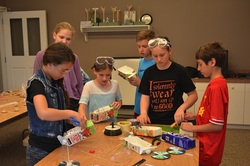 I couldn't keep them contained any longer, so we broke out the supplies to make our model cars. There was a lot of action in the classroom this week. We used saws, awls, knives, rulers, scissors, and a hot glue gun. The students are designing and building 3 or 4-wheeled vehicles. The goal of class this week was to make a completed car that runs in a straight line as smoothly as possible with little or no resistance. Most students need to continue working on their cars at home to perfect them. Again, they may use any material they have on hand and decorations are encouraged. Next week, we will be adding the power and having a race! HomeworkFinal Project: Students should be completing the hands-on portion of their project this week. Expect to spend a minimum of four hours on design, testing, redesign, research, etc. By the end of this week you should be ready to begin preparing your board, writing your summary, and if applicable preparing your hands-on class mini-challenge.
Race Cars: Students are to complete their cars they began in class this week. They are to come to class with a car that runs as smoothly and as straight as possible. Remember to reduce friction as much as possible around the axle holes, and try to invent ways to keep the axle straight. Students are free to use any household materials to improve their design. Story of Inventions (Optional): Read chapter 18 Board Games (Optional): Continue to improve board games for our Engineering Fair |
Categories
All
Archives
May 2016
|
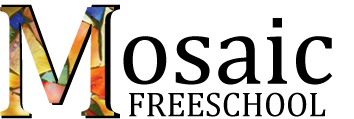
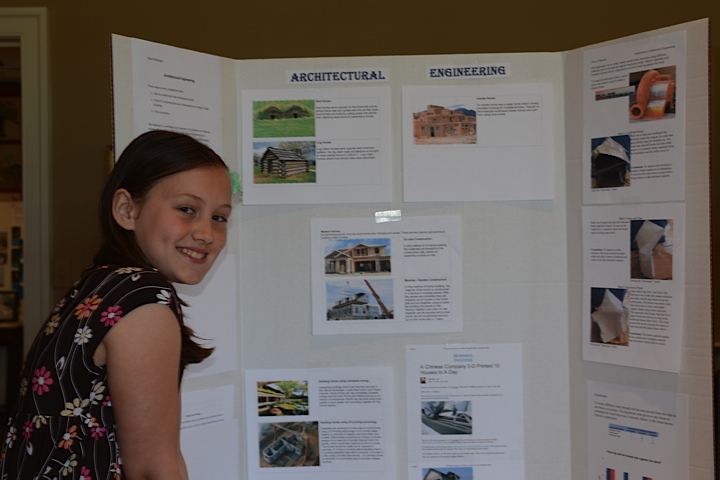
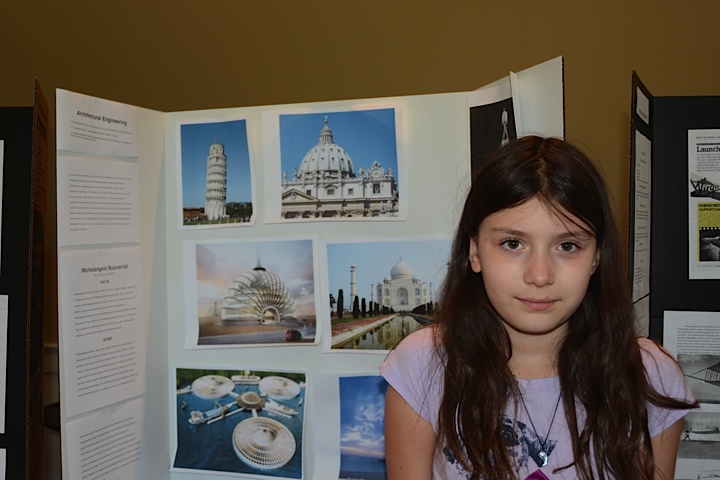
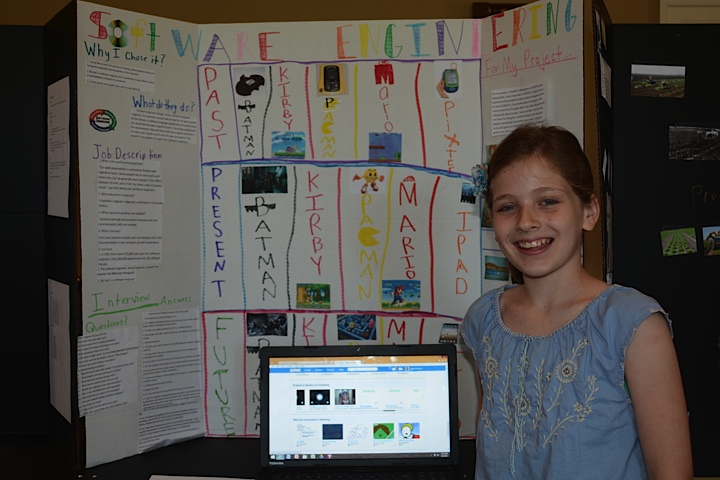
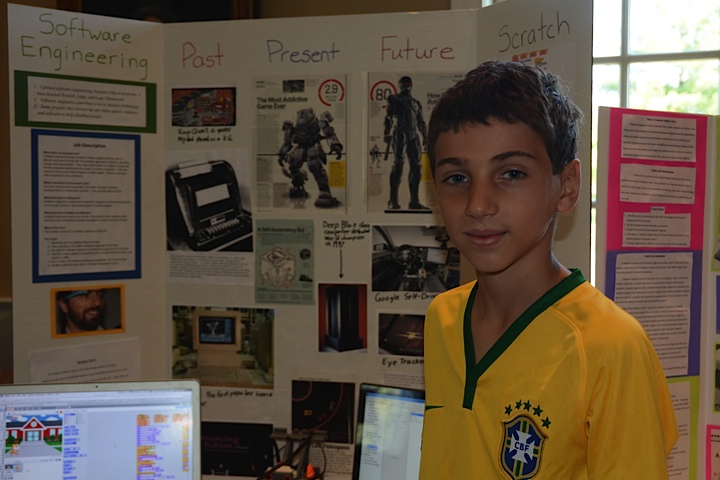
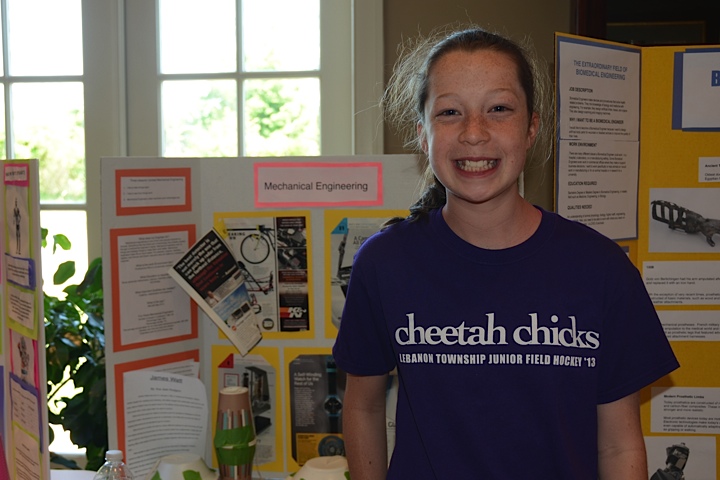
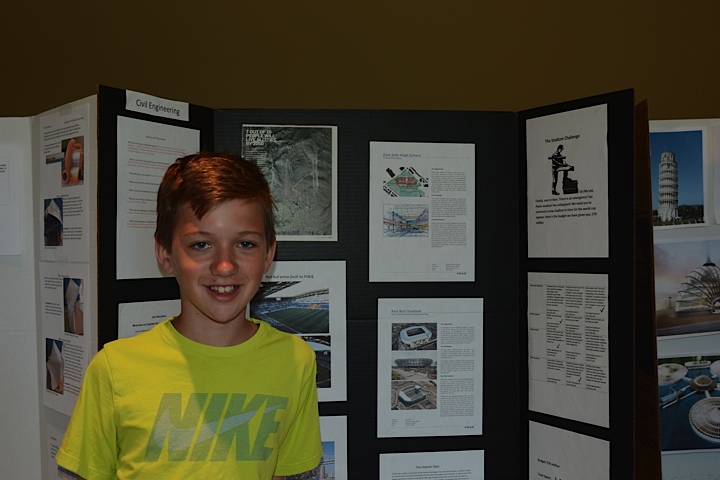
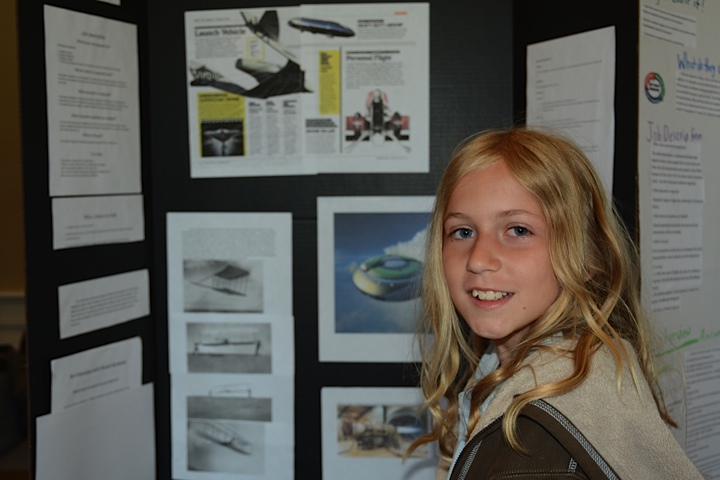
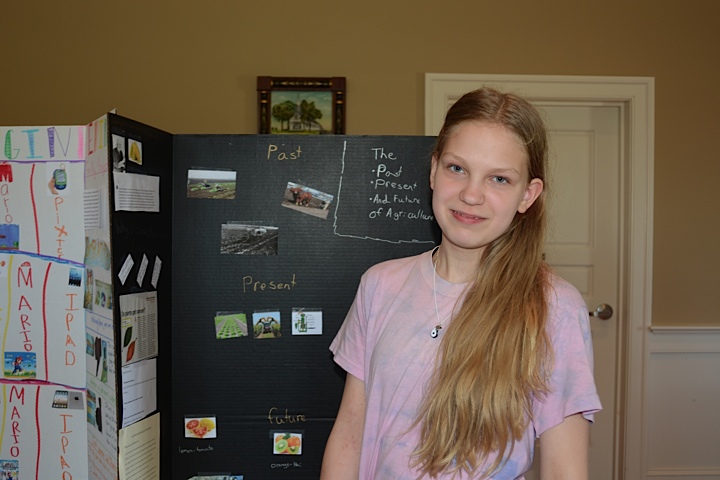
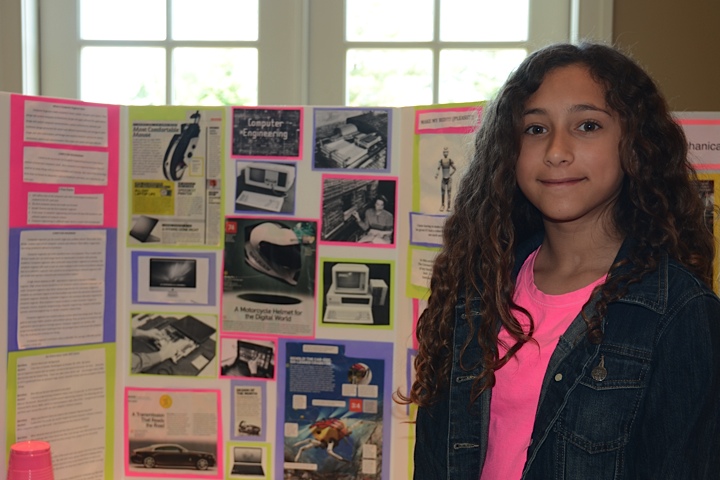
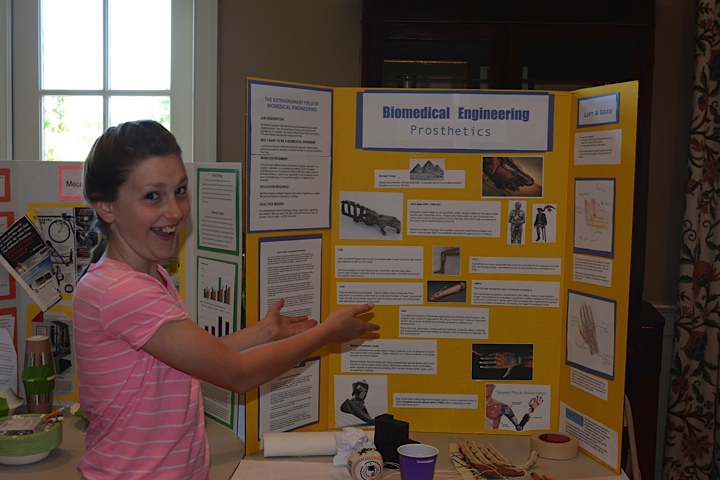
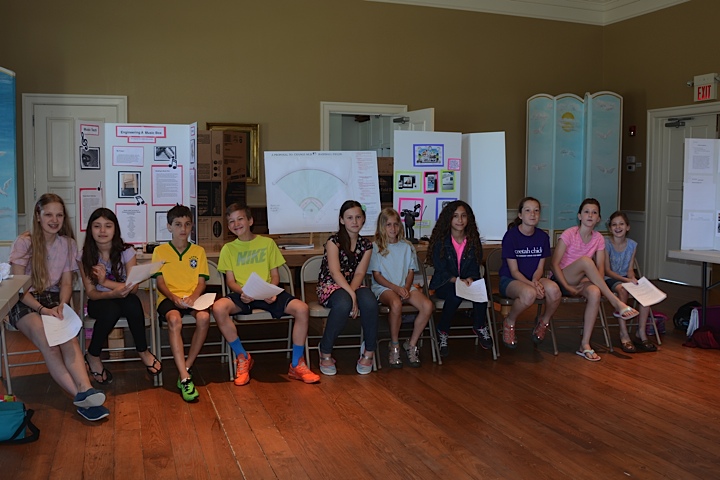
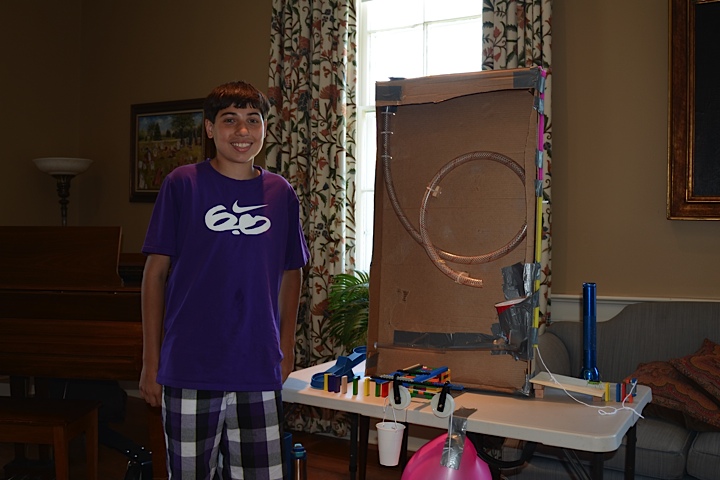
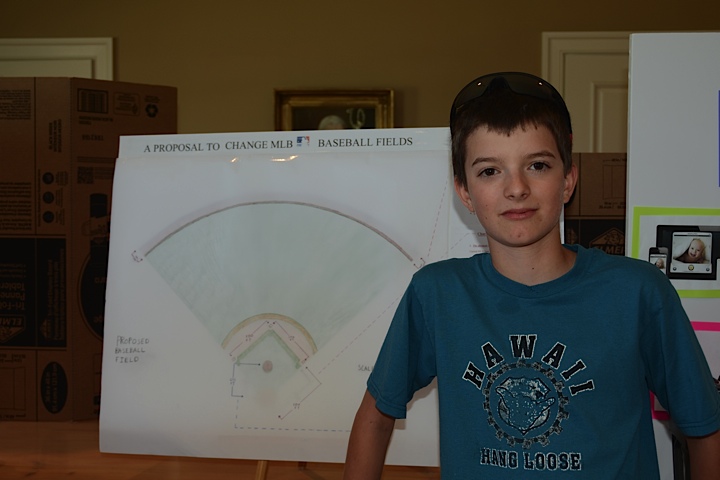
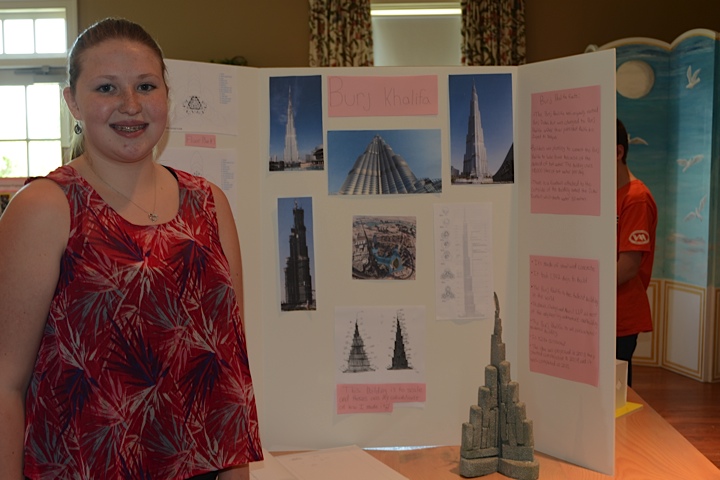
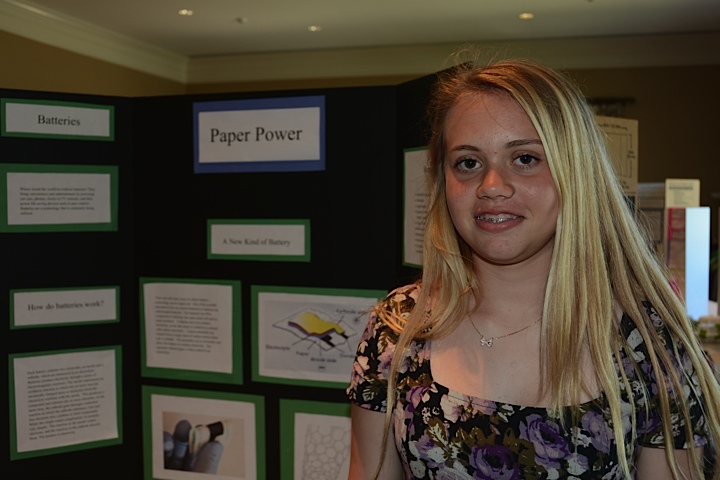
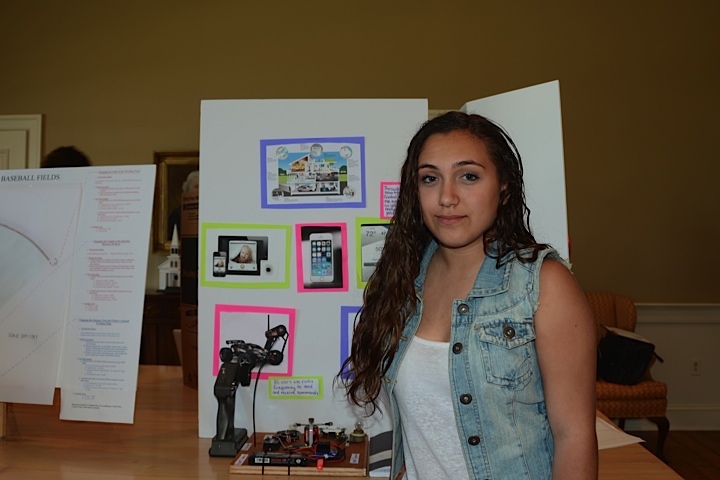
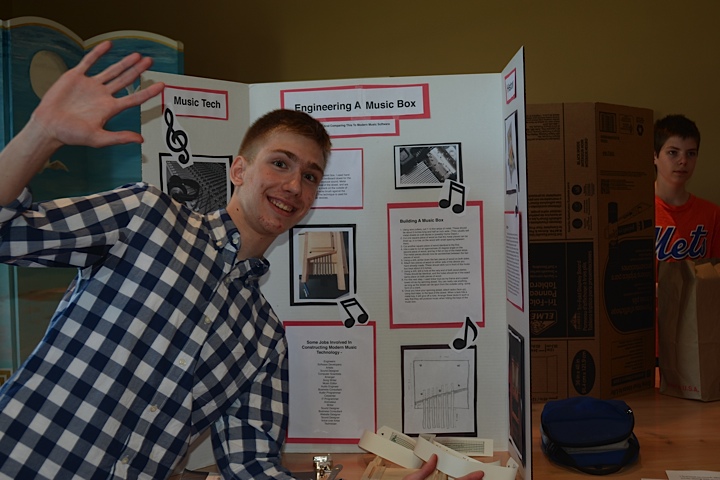
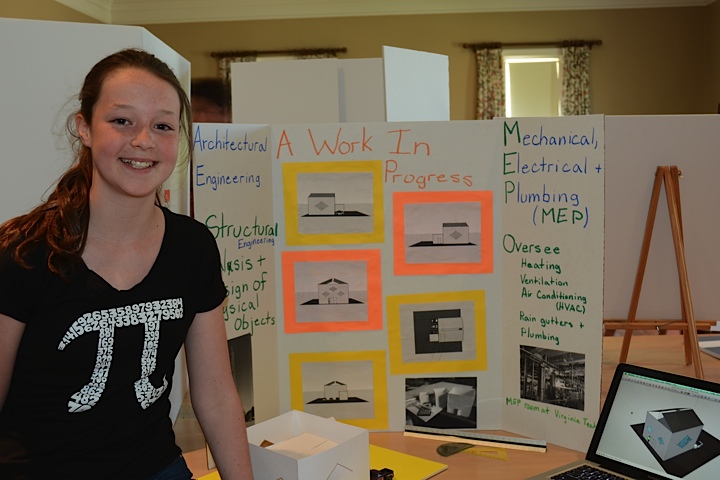
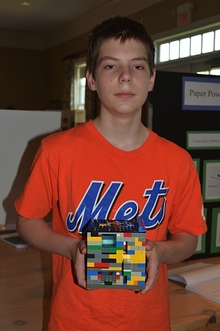
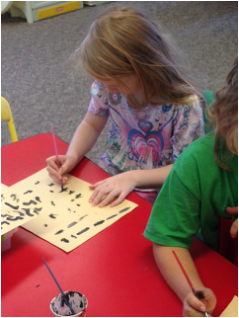
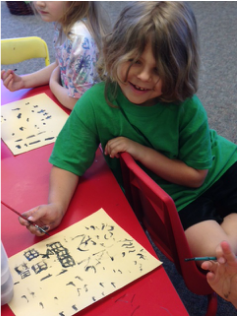
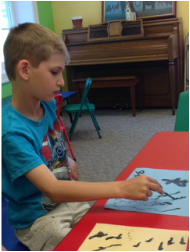
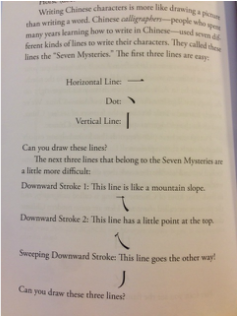
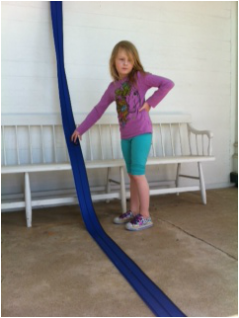
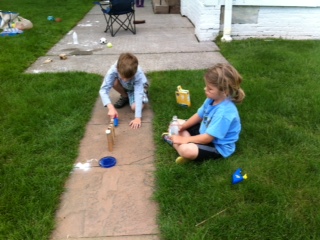
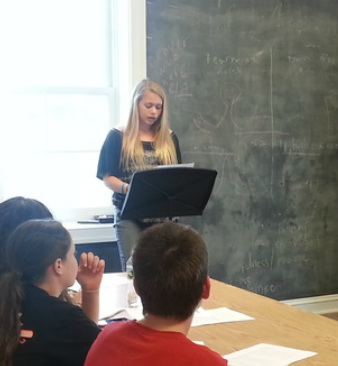
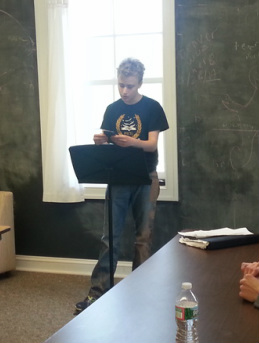
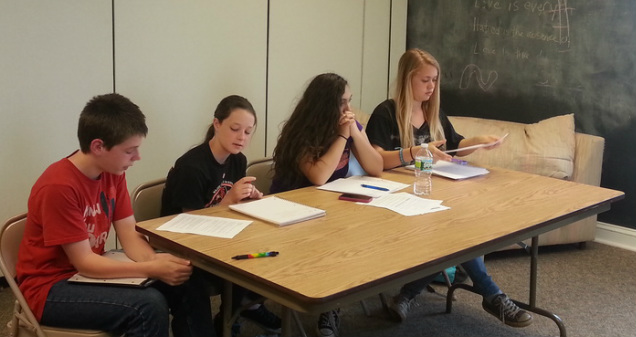
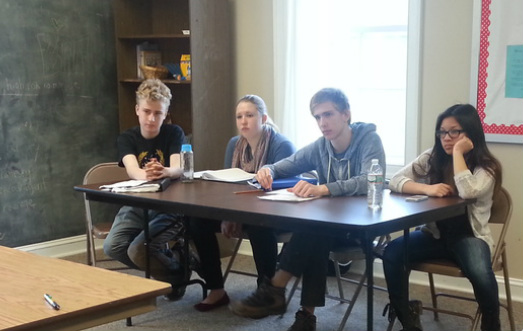
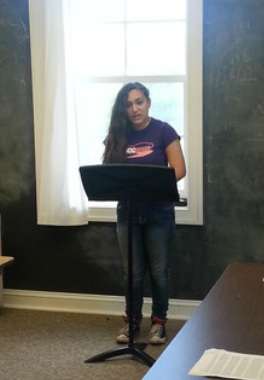
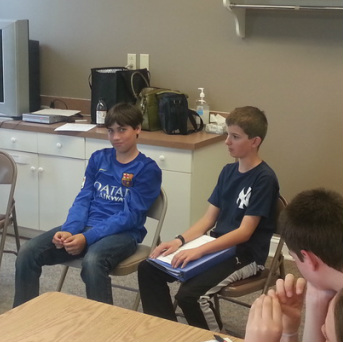
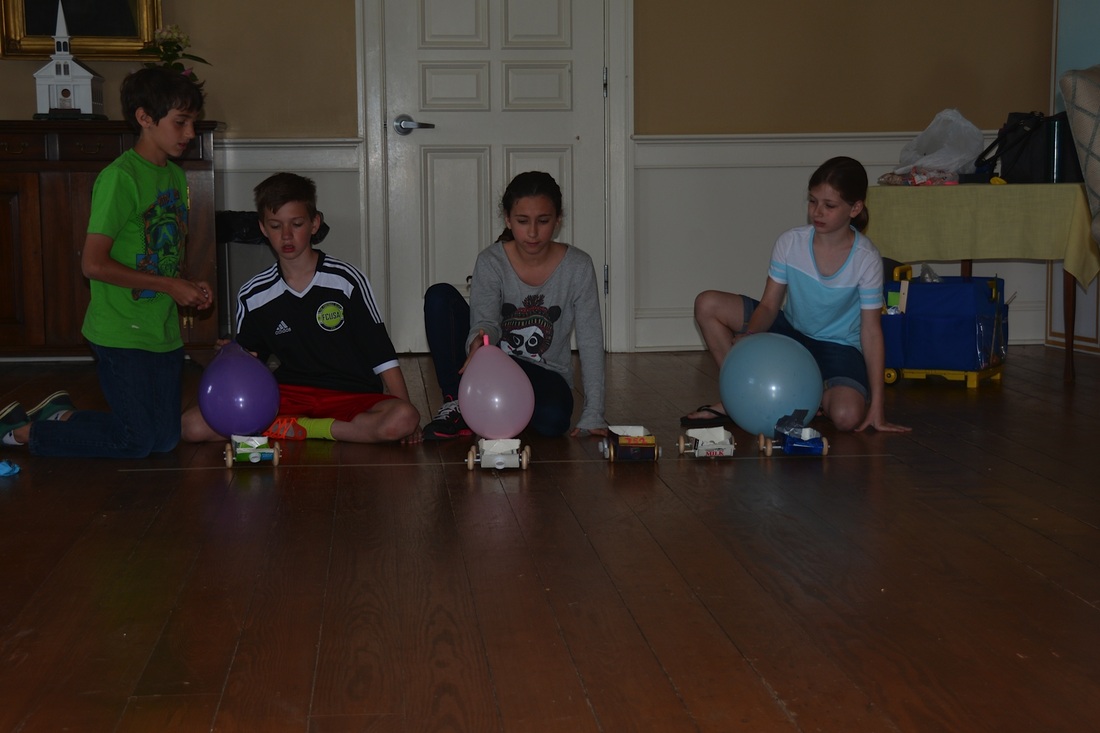
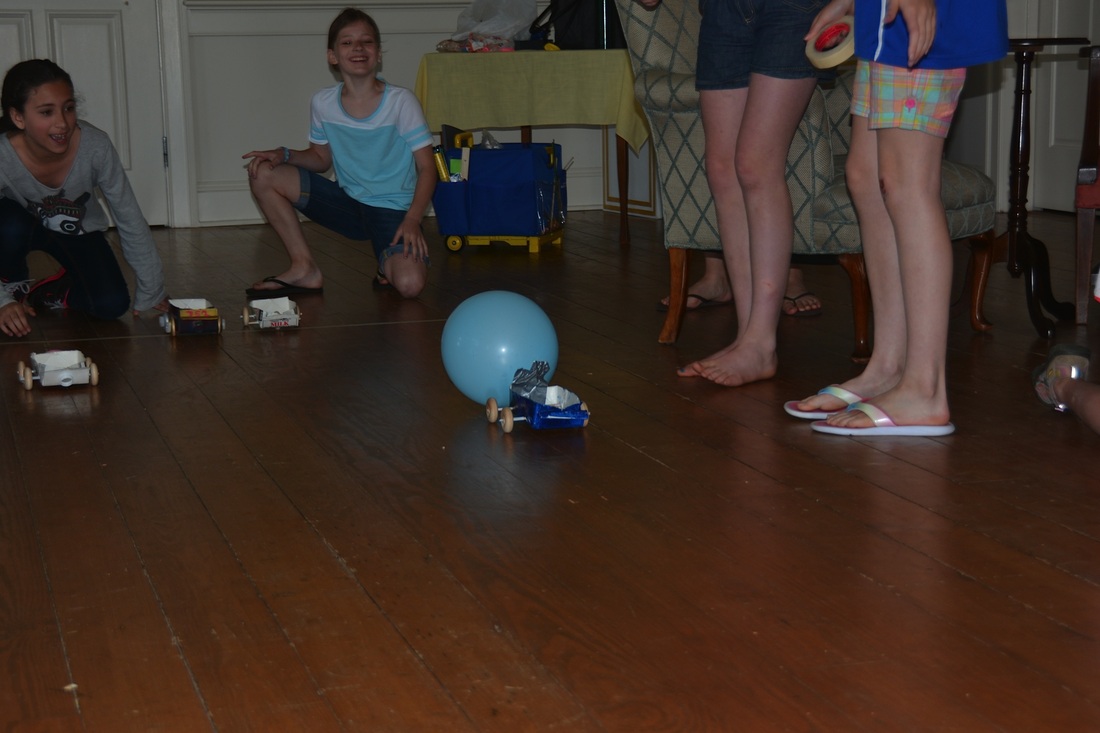
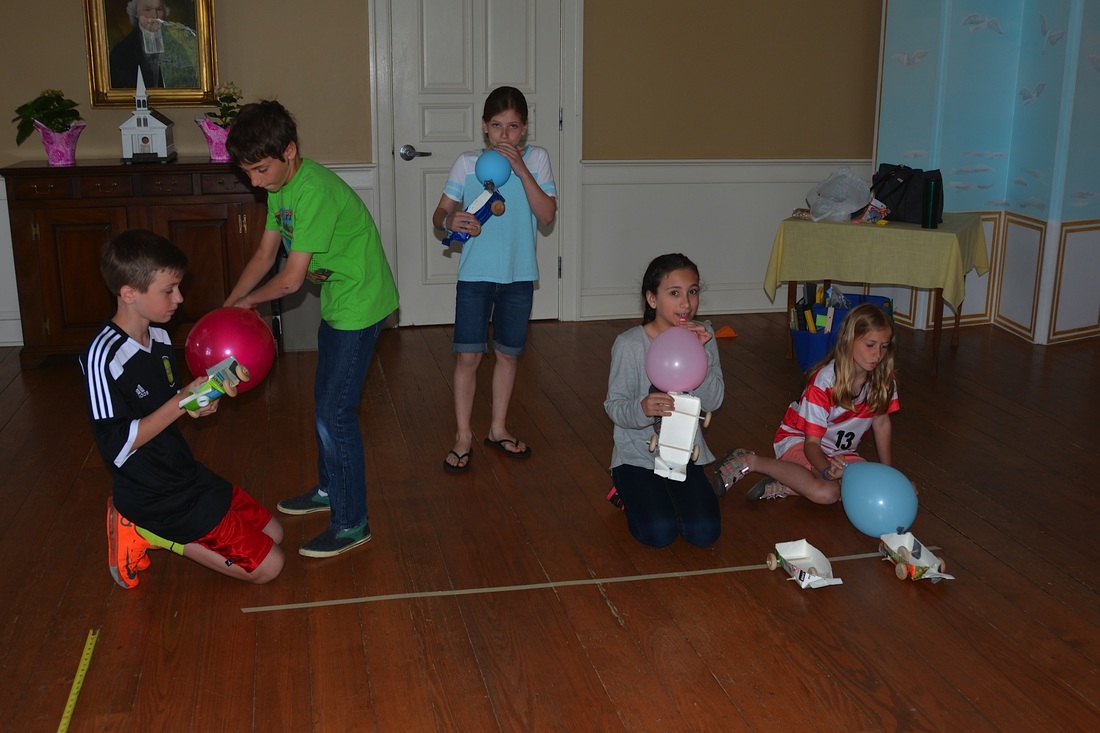
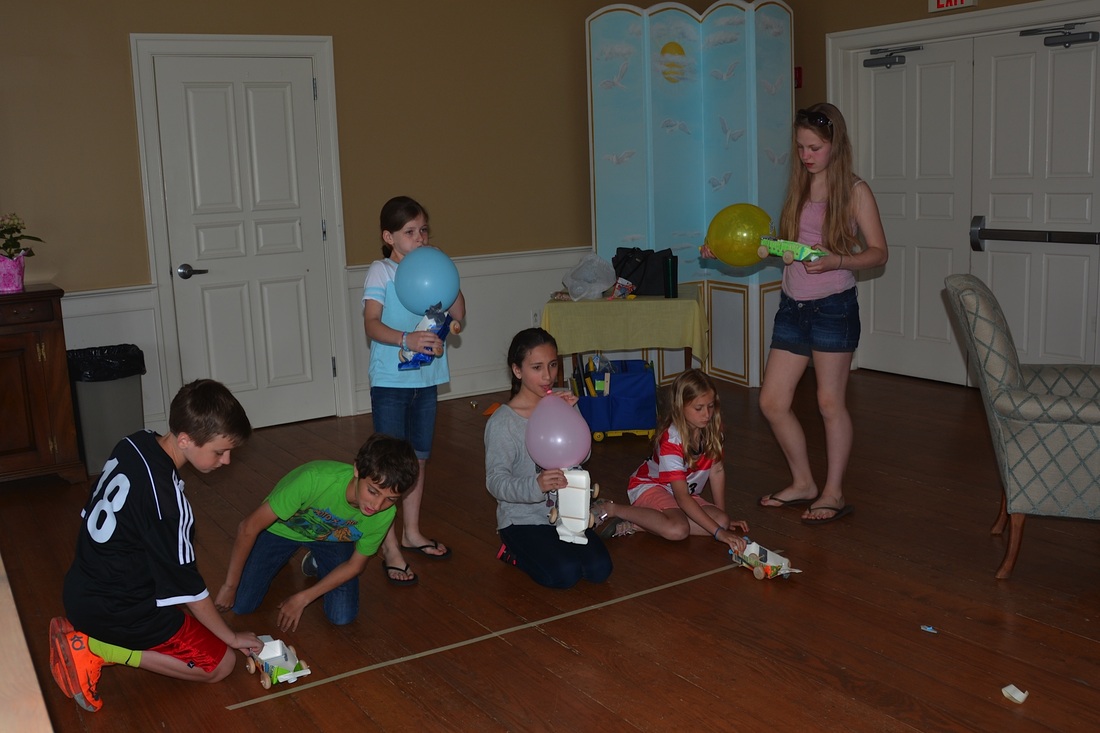
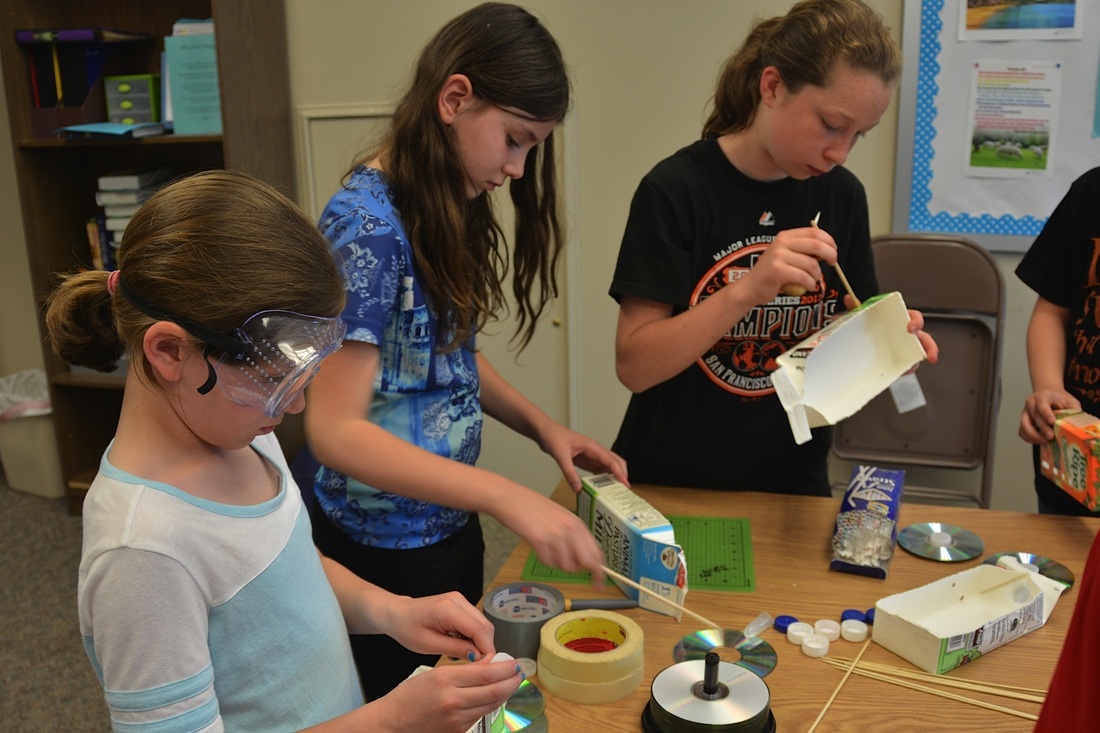
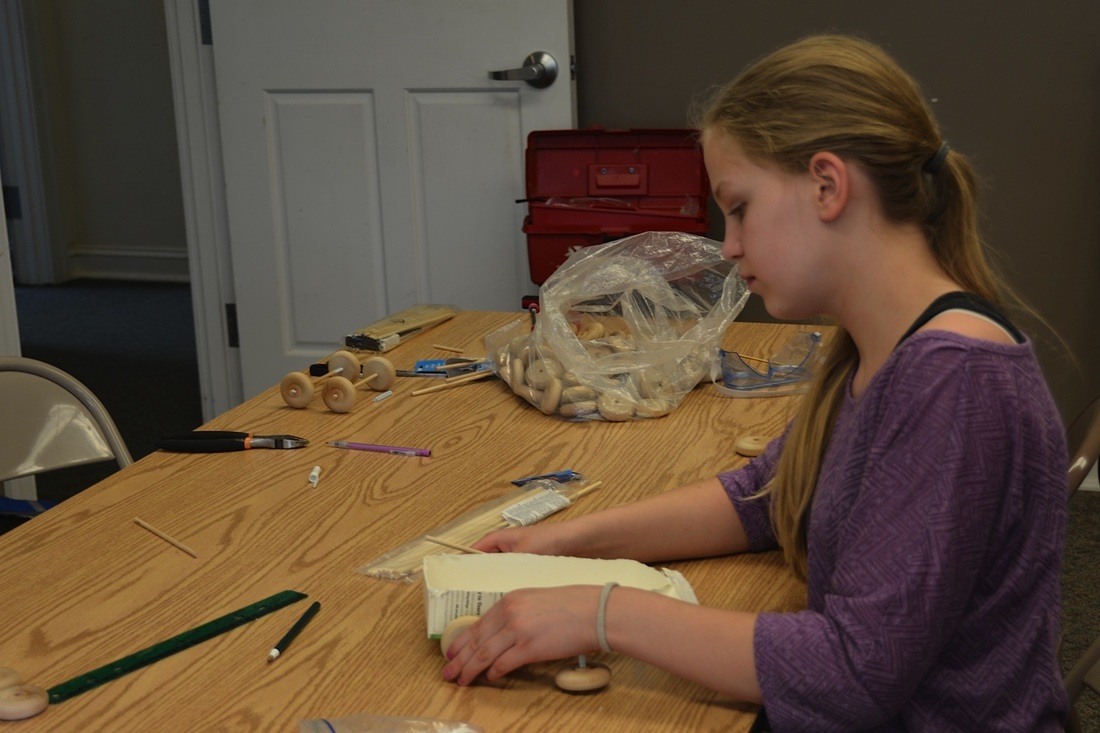
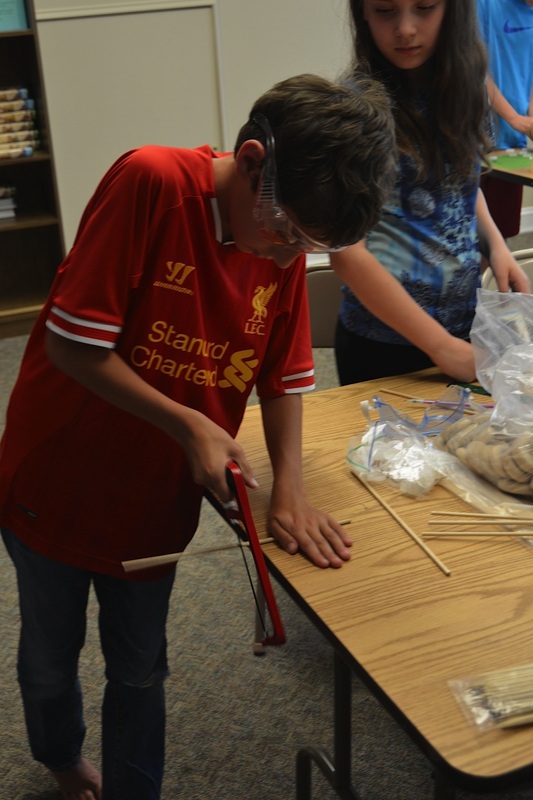
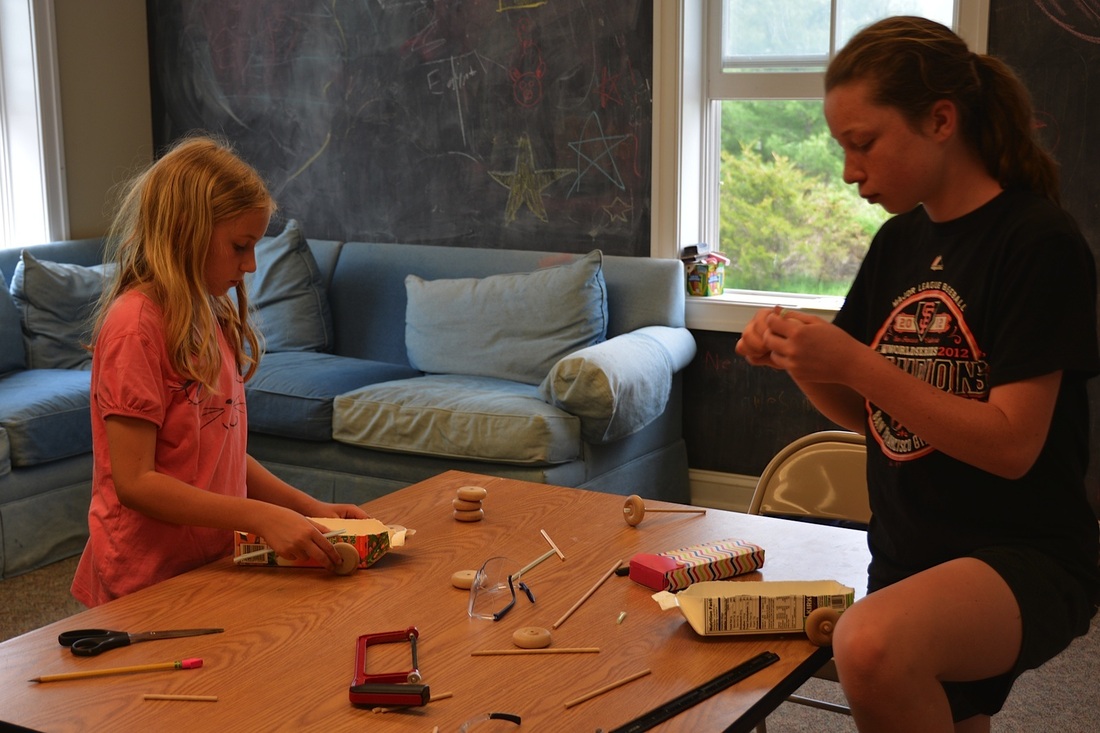
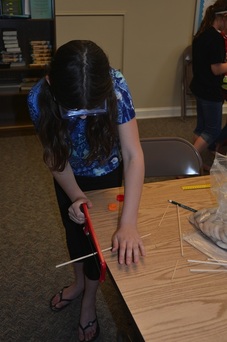
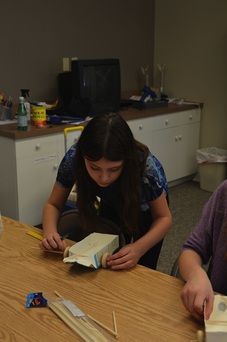
 RSS Feed
RSS Feed